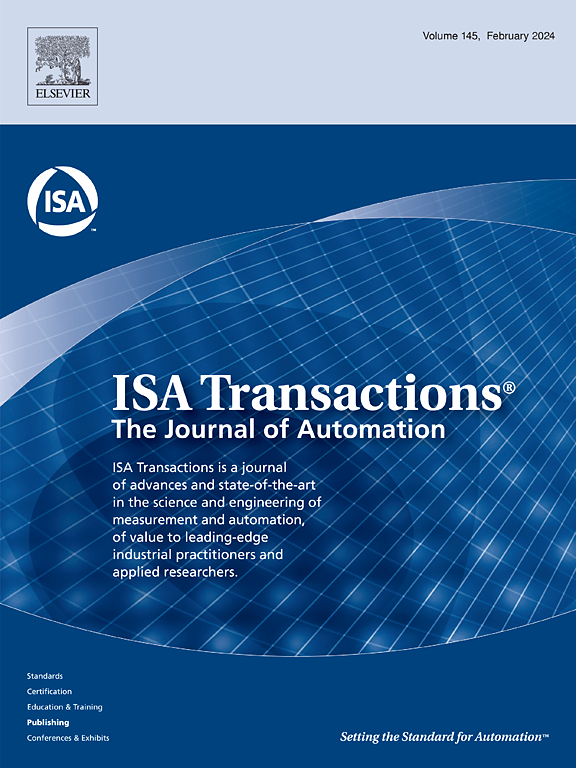Nonlinear decoration-driven adaptive neural finite-time control for USVs with two rotatable thrusters under false data injection attacks and input saturation
IF 6.3
2区 计算机科学
Q1 AUTOMATION & CONTROL SYSTEMS
引用次数: 0
Abstract
This study explores the trajectory tracking control problem in unmanned surface vessels equipped with two rotatable thrusters in an adverse network environment beset by challenges, such as false data injection attacks (FDIAs) and input saturation. This study used the hyperbolic tangent function to provide a smooth transition for the control input, effectively avoiding the system oscillation and instability caused by sudden changes in the input signal. Next, the concept of stepwise reconstruction was used to handle the FDIAs faced by the kinematic and dynamic channels of the system. Under the backstepping framework, the exogenous disturbance bias caused by FDIAs in the kinematic channel was compensated using virtual adaptive technology. In the dynamic channel, the neural-based, high-speed disturbance compensation technology was used to correct the dynamic deviation caused by the composite uncertain dynamics composed of FDIAs and external disturbances. Finite-time technology was further introduced to propose an adaptive finite-time control scheme based on nonlinear decoration. The proposed control scheme was analyzed on the basis of Lyapunov stability theory. The results indicated that all signals in the closed-loop system are bounded. Finally, the effectiveness of the proposed control scheme was verified using simulations. The results revealed that the proposed control scheme enables unmanned surface vessels to track the reference trajectory, exhibiting satisfactory control performance under the constraints of FDIAs, input saturation, and uncertain internal and external dynamics.
求助全文
约1分钟内获得全文
求助全文
来源期刊

ISA transactions
工程技术-工程:综合
CiteScore
11.70
自引率
12.30%
发文量
824
审稿时长
4.4 months
期刊介绍:
ISA Transactions serves as a platform for showcasing advancements in measurement and automation, catering to both industrial practitioners and applied researchers. It covers a wide array of topics within measurement, including sensors, signal processing, data analysis, and fault detection, supported by techniques such as artificial intelligence and communication systems. Automation topics encompass control strategies, modelling, system reliability, and maintenance, alongside optimization and human-machine interaction. The journal targets research and development professionals in control systems, process instrumentation, and automation from academia and industry.
 求助内容:
求助内容: 应助结果提醒方式:
应助结果提醒方式:


